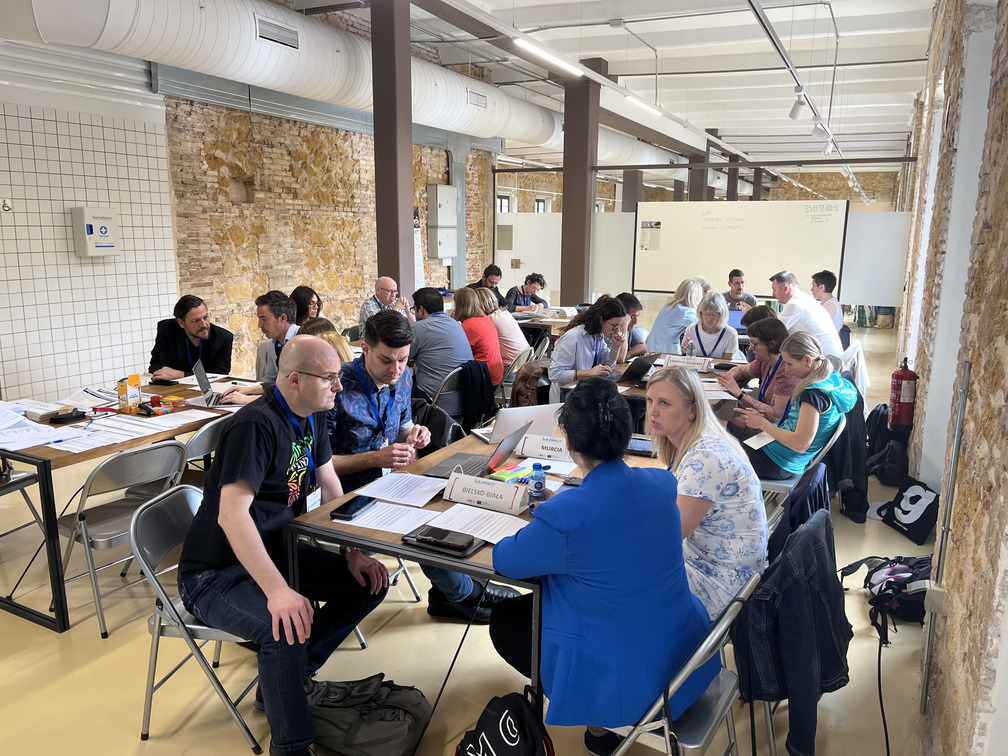Impactful urban regeneration: European cities learn how to centre their urban regeneration around measurable social impact
The URBACT network U.R. Impact puts social impact at the core of urban regeneration. By prioritising social impact with a focus on community involvement, urban regeneration actions are rethought by placing citizens and their social, economic, and environmental well-being at the centre of the processes. It also allows for an increased sense of belonging and civic participation.
Before we can talk about social impact, how can we ensure that the challenge we are aiming to solve through urban regeneration actually reflects the real needs of citizens and other urban stakeholders? More importantly, how can we make sure we are aiming for the 'right' social impact, unless the dreams and desires of our citizens and other urban stakeholders are fully expressed by our impact goals?
These are the questions the members of the U.R. Impact network bringing together ten European cities—Murcia (Spain), Kamza (Albania), Cinisello Balsamo (Italy), Hannut (Belgium), Targu-Frumos (Romania), Brumov (Czech Republic), Mertola (Portugal), Bovec (Slovenia), Ballymahon in Longford (Ireland), and Bielsko-Biała (Poland)—sparred with during their second transnational meeting that took place in Murcia, Spain, 19–23 March 2024.

Warmly welcomed by the Murcia city mayor and the municipal team, the participants had a chance to see first-hand how the story of division in Murcia, brought on by two major urban obstacles cutting through the city—a seemingly uninviting river and a barely crossable railway—is being gradually but relentlessly transformed into a story of connecting neighbourhoods and bringing people together. While the construction of new bridges and passes makes visual progress, improved social cohesion, mobility, and economic cohesion are simultaneously being reinforced in less visible but palpable ways. In other words, it seems like urban regeneration of physical space is bringing on positive social impacts. But how can we know for sure that this is actually the case? Enter social impact measurement.
Social impact measurement is a process of making often implicit, intangible impacts visible, measurable and therefore better manageable. The approach has already been rushing through the world of impact investing, making waves in the private- and non-profit sectors alike. The cities around the world are realising that (social) impact measurement has been a missing ingredient to trying to evaluate the effects of more holistic urban interventions, urban regeneration being a prime example.
As the name of the network suggests, U.R. Impact understands the importance and urgency of social impact measurement. That is why both the recent monthly online meeting and the transnational meeting have been to a large degree dedicated to this topic.
Indeed, Lidia Gryszkiewicz from The Impact Lab has been invited as an ad hoc expert to run a masterclass introducing the theoretical foundations of impact and a practical workshop on impact measurement.
The masterclass covered topics such as what is impact and what it is not, its main types, dimensions, elements, and the basics of the impact management process and the impact chain.
The workshop in Murcia 30 representatives of 10 European cities making up the network.
First, participants have reviewed their self-assessments of their current organisational impact capabilities. While doing so, their shared their good practices in terms of making impact a core focus of their respective urban strategic framework, process, culture & leadership, structure & system, resources, innovation, and external environment.
Furthermore, they have learned how to have a critical look at their draft Theory of Change, i.e. initial impact pathway they had developed for their respective urban regeneration project. While doing so, they have tested several tools helping them sharpen up their challenge formulation: "Causes & Symptoms Mapping", "Problem Definition Tool", "Starbursting" and "How Might We" questioning. This was done so that each participating city could have a critical look whether the challenge they initially set out to solve is indeed the core issue they should be focusing on.

On the other hand, participants were invited to have a second look at their initially foreseen target impacts. Here, tools such as "Stakeholder Mapping" and "Stakeholder Impact Vision" were helpful at integrating the stakeholder perspective in impact objective setting. Participants also had a chance to play with the "Impact Amplifier" tool to find ways to potentially exceed and boost their interventions' possible positive impacts, while restricting and replacing potential negative effects.
Finally, a round of peer reviews involved pairs of cities critically but constructively reviewing each other's theories of change, putting their clarity, coherence, logic, and several other key criteria to the test in an honest but friendly environment.
The second part of the workshop built on the theoretical foundations laid out in the masterclass, and introduced key impact measurement terms such as parameter, variable, indicator, indicator set or index. Other core concepts have been equally explained, such as drop-off, attribution, displacement, or dead-weight. What followed was an explanation of typical impact measurement challenges and most prevalent biases one should be aware of when embarking on impact measurement, as well as ideas how to avoid them.
Furthermore, U.R. Impact partners have learned about the current state-of-the-art in terms of the ongoing global effort of trying to standardise certain impact indicators. From SDGs to IRIS+, and from urban indexes to case studies, participants have been provided with various sources of inspiration where to look for their own indicators. And indeed, this is the next step: each city will take their improved theory of change and propose a first set of impact indicators to reflect their target impacts. These will then be reviewed in one-on-one coaching sessions the ad hoc expert will hold with each city team.
The impact measurement as one of the key focuses of the network seamlessly feeds into the preparations for developing the Integrated Action Plans that will preoccupy the participating cities for the coming months under the careful guidance of the lead expert of the network, Liat Rogel. The first steps towards this have already been taken in Murcia, with cities learning about the core elements of such plans and the first activities they could already plan in this respect. Again, peer reviews have proven an invaluable exercise to improve the understandability and focus of the first writings of the cities in a friendly but constructive manner.


